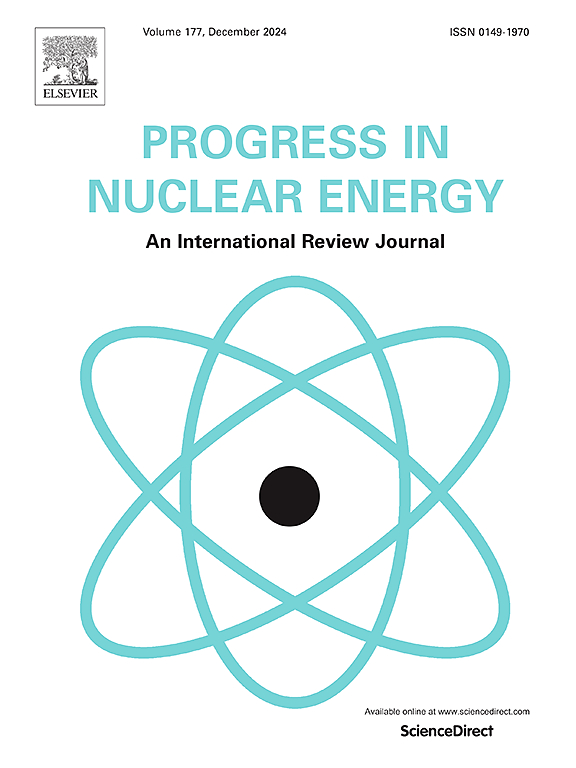A simple model of prompt neutron leakage self-multiplication for use in nuclear materials assay
IF 3.3
3区 工程技术
Q1 NUCLEAR SCIENCE & TECHNOLOGY
引用次数: 0
Abstract
When assaying special nuclear materials using the passive neutron multiplicity counting method, due account must be taken of prompt neutron leakage self-multiplication in interpreting the various counting rates observed. Most often, in practical work, it is treated as an unknown model parameter to be determined from the experimental data. However, in a learning environment and when planning experiments, it is useful to have a straightforward means to estimate the leakage self-multiplication of a measurement item. In the present work, we develop a simple, hybrid, one energy-group, point-like source model for leakage self-multiplication, implemented with interaction probabilities calculated based on spherical and cylindrical bodies. We use published criticality tables to demonstrate the procedure. We show how the prompt neutron leakage self-multiplication may be estimated rudimentarily, including the effects of neutron scattering within the item. This treatment has considerable pedagogic value because it completes, in a similar conceptual framework, the physical point-model picture commonly used to interpret such neutron correlation counting-based measurements. It provides a straightforward quantitative physics-informed structure for making a forward prediction of the leakage self-multiplication factor of a compact non-reentrant measurement item, which otherwise is introduced as an unknown model parameter to be estimated only from experimental data with no guidance on how the value can be estimated a priori. The numerical scheme has been developed with weakly multiplying objects in mind because they are typical of the kind of items measured by thermal-neutron well-counters for nuclear safeguards accountancy and nonproliferation verification purposes. Another potential use is for the assay of measurement items of known geometry and composition where the prompt neutron self-leakage multiplication can be estimated using the simple model developed, thereby allowing the (α,n) production rate to be treated as the unknown in the practical solution (or inversion) of the usual point-model coincidence equations.
求助全文
约1分钟内获得全文
求助全文
来源期刊

Progress in Nuclear Energy
工程技术-核科学技术
CiteScore
5.30
自引率
14.80%
发文量
331
审稿时长
3.5 months
期刊介绍:
Progress in Nuclear Energy is an international review journal covering all aspects of nuclear science and engineering. In keeping with the maturity of nuclear power, articles on safety, siting and environmental problems are encouraged, as are those associated with economics and fuel management. However, basic physics and engineering will remain an important aspect of the editorial policy. Articles published are either of a review nature or present new material in more depth. They are aimed at researchers and technically-oriented managers working in the nuclear energy field.
Please note the following:
1) PNE seeks high quality research papers which are medium to long in length. Short research papers should be submitted to the journal Annals in Nuclear Energy.
2) PNE reserves the right to reject papers which are based solely on routine application of computer codes used to produce reactor designs or explain existing reactor phenomena. Such papers, although worthy, are best left as laboratory reports whereas Progress in Nuclear Energy seeks papers of originality, which are archival in nature, in the fields of mathematical and experimental nuclear technology, including fission, fusion (blanket physics, radiation damage), safety, materials aspects, economics, etc.
3) Review papers, which may occasionally be invited, are particularly sought by the journal in these fields.
 求助内容:
求助内容: 应助结果提醒方式:
应助结果提醒方式:


